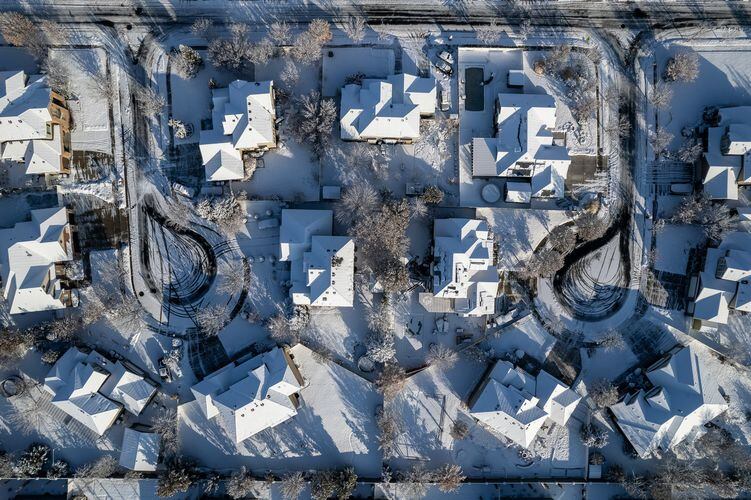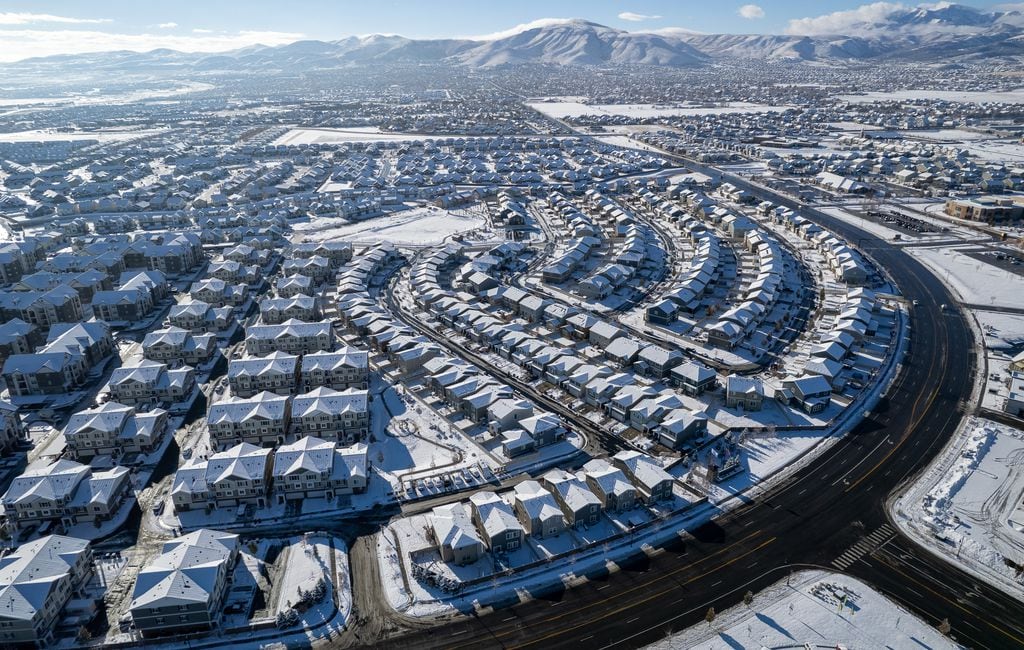The high-speed way Utah is growing right now raises worries as never before.
Whether a lack of water or affordable housing, intensifying traffic, new construction rising in your neighborhood or new crowds at a beloved recreation spot, many residents are experiencing rapid change and even disconcerting prospects for what they cherish in their own quality of life.
The issue loomed even larger in late November, when Utah’s latest population estimates confirmed the nation-leading growth it saw from 2010 to 2020 had picked up during the pandemic years, pushing the state to 3.4 million people with record in-migration.
For the first time in a generation of regular polling, sentiment numbers show Utahns turning increasingly sour on growth — not by overwhelming majorities, but enough for elected leaders and policy experts to launch a new $1 million campaign seeking to gauge their real feelings.
They’re asking all Utahns to weigh in as part of a process called “Guiding our Growth,” aimed at crafting a consensus on ways to shape expansion over the next several decades.
“There’s a little fear of losing what makes Utah special as we continue to grow,” said Laura Hanson, state planning coordinator and point person on the topic in Gov. Spencer Cox’s Office of Planning and Budget.
Along the Wasatch Front, new apartment buildings are going up at a record pace, traffic congestion is mushrooming in many areas, and the last vestiges of developable land in many of the state’s population centers are filling up.
Many rural communities in Utah’s tourist country suddenly find themselves burgeoning with newcomers and short-term rentals, while others are grasping for economic development.
The Beehive State is also seeing public backlashes to new land uses in many areas, Hanson said, as well as municipal elections swayed increasingly by local development issues.
Water, housing, traffic and access to recreation all surfaced as major concerns from city and business leaders during a series of initial scoping workshops the state has held since July in all of Utah’s 29 counties.
But the idea of preserving community character is also top of many minds.
“All of it highlights this is something Utahns are really struggling with,” Hanson said in an interview, “and it seems an appropriate time to reach out and say, “Let’s talk about this.’”
What do Utahns value most?

(Trent Nelson | The Salt Lake Tribune) Fresh snow in Herriman on Thursday, Dec. 8, 2022. Utah is planning a sweeping campaign to gather residents’ input on issues such as housing, traffic, recreation and quality of life.
Initial online pages of the state-backed Guiding Our Growth effort are designed to engage all residents with a series of surveys meant to frame and spur what officials have dubbed “a statewide conversation on growth.”
“Growth decisions aren’t easy,” the survey tells participants. “Sometimes we have to adjust our current way of thinking and living in order to reach a desired future outcome.”
What do you value the most? What do you consider at risk? What are your big ideas for saving the vital aspects of Utah’s ways of life?
Convening this rare statewide discussion is not intended, however, as simply measuring public sentiment.
“What we don’t want to do is bury our head in the sand and pretend growth is not happening,” said Ari Bruening, president and CEO of the regional planning agency Envision Utah. “We want to look at what we need to be doing to accommodate it.”
Guiding Our Growth’s tax-funded public surveys, data modeling, workshops and community forums — to be led by Envision Utah and other regional counterparts — are already underway at guidingourgrowth.utah.gov, and will extend well into early 2023.
Answers collected through February will feed a series of more detailed growth scenarios, with analysis and modeling by the University of Utah’s Kem C. Gardner Policy Institute for the state as a whole and potentially for select socioeconomic regions.
That approach will offer glimpses of what various versions of Utah might look like by 2050.
Residents then get additional chances to weigh in on those scenarios interactively, each choice with its own trade-offs and consequences.
The preferences that emerge by next summer and fall then will guide state leaders and city officials as they craft more enduring policies and strategies toward growth, potentially tying them with a series of big government moves and multibillion-dollar capital investments.
That part of it could prove the most important — at least judging from the last time Utah went down this path.
Is the past a guide for Utah’s future?

(Trent Nelson | The Salt Lake Tribune) Fresh snow on homes in South Jordan on Thursday, Dec. 8, 2022. Utah is planning a sweeping campaign to gather residents’ input on issues such as housing, traffic, recreation and quality of life.
More than 20 years ago, Utah was recovering from a 1990s recession and people began to move here in noticeably large numbers, edging the state’s population toward 2 million. Residential development gobbled up open fields in the suburbs across Salt Lake and Utah counties and Interstate 15 traffic slowed to a smog-generating halt.
The state convened the equivalent of a summit to focus on and debate growth and what it meant for Utahns’ way of life. The process involved hundreds of community meetings, surveys and even televised events, all highlighting the likely impacts of adding population on land use, water, roads and air quality.
Among other ideas, the process yielded a template for what state officials called “quality growth,” which focused on adding density, reducing lot sizes, locating new homes closer to job centers, offering more alternatives to single-family homes and shifting to more mass transit usage.
Some of these initiatives — particularly higher densities and smaller lots — still run into opposition at the grassroots level, but there is strong evidence that applying these principles in the intervening 20 years has saved Utah vast reserves of land and water, reduced car trips and led to a boom in development along transit lines.
“The reason Utah is a great place to live today is because we did this planning work in the past,” Hanson said. “We can still be a great place to live in the future — if we put in the work to continue this long-range planning and thinking about how our communities will grow.”
The late-1990s growth debate also yielded a crucial to-do list for state government that included large investments in transit and construction of the Legacy Highway, among other goals.
“One of the big ideas that came out of this in the late 1990s was ‘let’s build a whole bunch of new TRAX and FrontRunner [lines],’” Bruening said. “So what are the big moves this time?”
Depending on public feedback, similar actions this time around might include investments in trails, open space, public transit and new roads, Hanson added. State and city governments are likely to emerge with their own solutions, too.
“We’ve heard again and again, people are not interested in a top-down, authoritarian response,” she said. “They want their local communities to be in charge of their futures.”


































